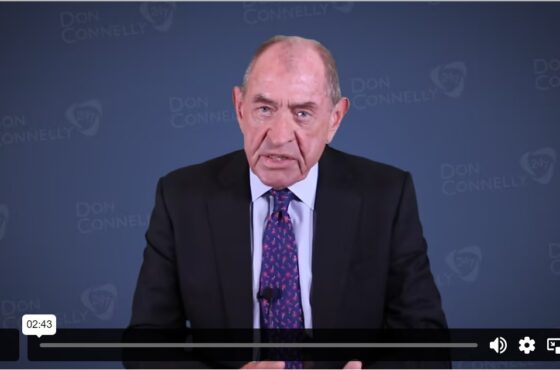Top 10 Posts Financial Advisors Read the Most on Our Blog in 2018
 As 2018 is coming to an end, we decided to do a quick recap of the top 10 posts that thousands of Financial Advisors and Wholesalers read on our blog throughout the year. They are on various topics – from practice building, to prospecting and relationship building, to establishing trust and storytelling.
As 2018 is coming to an end, we decided to do a quick recap of the top 10 posts that thousands of Financial Advisors and Wholesalers read on our blog throughout the year. They are on various topics – from practice building, to prospecting and relationship building, to establishing trust and storytelling.
We hope this quick recap will help you finish the year strong and give you some pointers on how to improve your practice in 2019. Enjoy!
#1. Do you have what it takes to be a Financial Advisor?
If you are new to the business, this post will help you make sure you are prepared for what it takes to be a successful Financial Advisor.
Successful advisors don’t become successful by accident.They don’t allow themselves to drift through life. They have self-belief, determination and optimism – they develop a plan and follow it. If you have the drive and commitment to succeed and are prepared to put in the effort to upgrade your soft skills, there’s no reason you can’t enjoy a successful and rewarding career as a financial advisor. Read more.
#2. Why you need both hard and soft skills to succeed as a Financial Advisor
Naturally, as a Financial Advisor you need to have good product knowledge and proper training to be able to recommend appropriate products as well as adhere to the increasingly strict industry regulations. But hard skills alone won’t secure you success.
Even if you’re highly competent with technical information and product knowledge, unless you also possess the right soft skills, you won’t get your message across. This post explains why that is and what you should do. Read more.
#3. Five ways to improve your time management
The difference between success and failure often comes down to what you do with your time.
As both a financial advisor and a business owner you need to focus on profit-generating activities. And you are not generating income unless you are sitting in front of clients, or talking with them on the phone. Refuse to let any other activities take precedence over appointments and prospecting.
This post will give you five ideas on improving your time management skills right away and hopefully help you succeed rather than fail as a Financial Advisor. Read more.
#4. Four fears prospecting can eliminate for you
If you read the previous post, you know that prospecting is the backbone of your business and that’s why you need to prioritize it when optimizing how you spend your time.
Many Advisors though, procrastinate prospecting and seem to always be preparing to prospect. Don’t be like the majority of people in this business – because not only will prospecting actually help you get more proficient at it and help you secure more business, but because the act of prospecting will also empower you and help you to overcome your fears. This post will explain how. Read more.
#5. Four behaviors to avoid if you want to allay client concerns
If you successfully prospect and keep your pipeline full, next you need to make sure you don’t blow it during the appointments.
In the first meeting with you, prospective clients may be unsure if investing is the right thing to do. They may also have concerns about whether you are the right person to advise them. How you behave in your first client meeting will dictate what happens next. You need to act to allay not only their concerns around the investment process itself, but to eliminate any concerns they may have about working with you personally. This post will focus you on four behaviors you need to avoid if you want to stay in the race for your prospects’ business. Read more.
#6. Five reasons why prospects will hire you over the competition
In this competitive industry most financial advisors remain at a mediocre level because they look and sound the same. Unless you make yourself unique and memorable, you too may as well resign yourself to a life of under-achievement.
Prospects will decide quite early on whether you’re the right fit for them – so put the focus on your ‘soft’ skills – these are the skills that will differentiate you from the competition. Here’s some more food for thought on what to do during or after your first client meeting if you want prospects to hire you instead of the Advisor next door. Read more.
#7. Five things that could ruin your clients’ trust in you, in seconds
If you’ve already opened the account and built rapport with a certain client, it doesn’t mean you get to sit back and relax. You may have earned their trust through exemplary behavior and a 5-star service that goes above and beyond, but it takes just seconds to break it down. Just one slip and all that hard-won trust is gone forever. This post will help you make sure this doesn’t happen by avoiding a few behaviors. Read more.
#8. Five signs that it’s time to let go of a client
Signing up a new client feels like an achievement, especially for new advisors. Over time however you’ll find that you have two types of clients: Clients you actively look forward to speaking to and the ones you come to dread dealing with.
As a financial advisor you should aim to only work with clients who are enjoyable to deal with and profitable. It’s not only acceptable to prune out bad clients – but essential to keep your business healthy. This post will give you some pointers on how to know when a client is no longer a good match for you. Read more.
#9. Five stories to develop strong relationships with clients based on trust and likeability
As you can see even in this single recap blog post, being likeable, establishing trust and building relationships lies in the core of your success as a Financial Advisor. And the best way to initiate a strong relationship with clients is to tell them stories.
People don’t need to have a ton of data thrown at them in the first meeting. They will be more interested in whether they like and trust you. Forget the numbers and pie charts, and use your personal stories and experiences to help you establish trust and likeability in the minds of your prospects. This post will give you five such stories to get you started. Read more.
#10. Six analogies to use when convincing clients to stick to the plan
At some point we will enter bear market territory. Clients do not always act in their best interest, especially in volatile markets, so you need to have a plan for making sure clients stick with the plan despite market conditions.
Stories and analogies are great ways to capture a client’s attention and get them to see things from a different perspective. When used correctly, they’re highly useful tools to influence clients to act in the way you want them to. Analogies are especially effective because clients come to understand what you’re saying by drawing their own conclusions.
In this post you’ll find six great analogies to help your clients see that they should stick to the plan. Read more.
We hope the year 2018 was great for you as it was for us,and that you achieved all the goals you set for yourself and more. If you still have some time on your hands, revisit our holidays post from last year for ideas on how to make the most of this holidays season.
Happy Holidays from all of us at Don Connelly & Associates. Use the remainder of the year to reflect on what you’ve achieved and what else you’re aiming for. And come January, let’s be stronger, inspired and more motivated to achieve even greater success in 2019!
Watch this two-minute video and let Don Connelly tell you how joining Don Connelly 24/7 will help you take your business to the next level.
We recommend the PLATINUM membership for its best value for money – access to all the tools you’d need to succeed for less than $69 cents a day.



